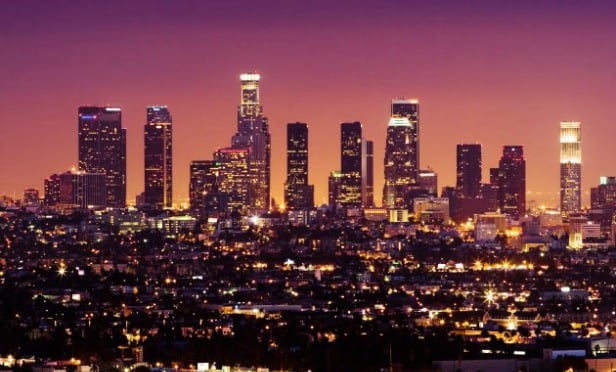Los Angeles rent growth was the third strongest in the nation, according to a new report from Yardi Rent Café. Rents in Los Angeles grew 6.6% year-over-year in 2018, up to an average of $2,461 per month. Most submarkets throughout the region saw rental rate gains, with Lancaster and Santa Clarita among the Los Angeles submarkets to see the highest rent growth. Huntington and Marina del Rey also recorded strong rental rate gains for the year.
A shortage in apartment supply drove the gains this year. “Compared to last year, Metro Los Angeles saw a 23% decline in the number of units projected to be completed in 2018. We estimated that approximately 11,400 units would enter the market by the end of the year, Adrian Rosenberg at Yardi's Rent Café tells GlobeSt.com. “Although the City of Los Angeles accounts for a large chunk of the new apartments expected to be completed, approximately 4,600, the supply here is down by 14% year-over-year. Along with an ever-increasing demand for rentals and a high occupancy rate of 96.7%, the low supply made room for apartment prices to swell even more.”
In addition to a shortage of apartment stock—an issue throughout Southern California—job and wage growth also contributed to the growth in rent rates. “Some of the most significant employment sectors in Los Angeles, like professional and business services and leisure and hospitality swelled by more than 3% year-over-year,” says Rosenberg. “So it's not only low supply influencing rent growth but also strong fundamental metrics like job growth, low unemployment and increasing wages.”
Rent growth was strongest in areas just outside the urban center, where rents are generally less expensive. This also illustrated the 2017 pattern of urban growth spilling into surrounding markets. “As big cities' urban cores start to cool down in terms of rent growth, the suburbs experience steeper increases,” says Rosenberg. “With rents currently at $1,284, Lancaster is in high-demand because it offers more affordable prices, below the market's average, which is $2,526.”
This is a standard pattern of rent growth, especially in a market with a serve affordability problem in the housing market. Los Angeles surrounding secondary markets fit this rent growth and migration pattern. “Rent growth follows demand, and demand is present where there's money,” explains Rosenberg. “In hot markets like Metro Los Angeles, renters are looking for quality affordable housing and overall better prices compared to coastal cities. Suburbs tend to be more affordable, rentals here are larger in terms of size and, in addition, suburban public schools are often better than inner city schools. Lancaster and Santa Clarita both fit well in this category. With 20% more renters than in 2011, the two cities are among the top 10 LA suburbs that have seen the most significant changes in renter population between 2011 and 2016.”
Not all markets outperformed last year's growth. Laguna Niguel, Newport Beach and Irvine all saw flat rent growth year over year. However, these markets also had the largest new construction activity. “We could say that the area witnessed an apartment boom. Approximately 3,500 units were completed here in the last couple of years,” says Rosenberg. “With the influx of new apartments, Newport Beach and Irvine managed to balance supply and demand.”
© Touchpoint Markets, All Rights Reserved. Request academic re-use from www.copyright.com. All other uses, submit a request to [email protected]. For more inforrmation visit Asset & Logo Licensing.







